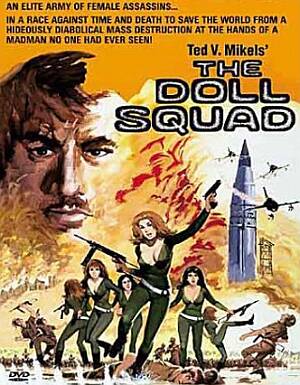★★★½
“Leon, if Matilda had been adopted by Stansfield, instead of Leon.”
 Concerns about some content here means Kite has had a tortuous release in the West. First time out, in 1998, it was shorn basically of all explicit sexual content: given the potentially underage nature of the animated heroine, Media Blasters didn’t want to be hit with a kiddie porn charge – laughable though that may seem for a “cartoon”! – and played it very safe. Subsequent releases over the next six years restored first much, in the “Director’s Cut”, then all (“Special Edition”) the footage, but the OAV* might just work better without the sex. It’s hardly as if I finished it and thought, “Y’know, what this really needs is some sequences of the heroine getting molested.”
Concerns about some content here means Kite has had a tortuous release in the West. First time out, in 1998, it was shorn basically of all explicit sexual content: given the potentially underage nature of the animated heroine, Media Blasters didn’t want to be hit with a kiddie porn charge – laughable though that may seem for a “cartoon”! – and played it very safe. Subsequent releases over the next six years restored first much, in the “Director’s Cut”, then all (“Special Edition”) the footage, but the OAV* might just work better without the sex. It’s hardly as if I finished it and thought, “Y’know, what this really needs is some sequences of the heroine getting molested.”
Because the story is interesting enough on its own. Sawa is a teenage assassin, basically mind-controlled by her foster father, Akai: he’s a cop who uses her to mete out vigilante justice to paedophiles, etc. [This is ironic given their relationship, the nature of which even the edited version makes fairly clear.] She meets a young man, Oburi, in much the same situation, and their growing relationship threatens to disrupt the status quo of everyday slaughter. And, “slaughter” is the word, since Sawa’s weapon of choice is bullets that first penetrate the victim, then explode. Cue more irony: in America, even animated teenage sexuality is entirely verboten, but teenage, paint-the-walls-blood-red carnage? Bring it on.
The action is certainly intense, well-animated and directed, though perhaps excessive. Even after falling from a building, through the road, down to the subway – then being blown up, flying back into the air and blasted through an apartment window, some BandAids are apparently all the medical attention Sawa requires. This conflicted badly with the gritty realism of the story, and I also hated the doodling sax soundtrack, which sounded like something rejected by Abel Ferrara for Driller Killer. Otherwise, though, it’s generally impressive and stylish, with a downbeat approach that is refreshing, as well as some spectacularly messy violence.
* = Original Animation Video, a common “straight to video” anime format. It’s only 50 minutes, about standard length for such things. A live-action version, directed by Jorge + Javier Aguilera, produced by Rob Cohen & Anant Singh, was announced earlier this year, but no release date has been scheduled. And No Doubt’s video for Ex-Girlfriend borrowed heavily from Kite – the bathroom assassination is re-staged, almost shot-for-shot, as this video shows.
Dir: Yasoumi Umetsu
Star (voice): Kotomi Naruse, Shingo Oyamada, Goro Shibusawa, Tatsuo Matoba





 To describe this as eagerly anticipated would be… well, wholly wrong, actually. I’ll tell you how long the DVD has sat on our shelf: I bought it on
To describe this as eagerly anticipated would be… well, wholly wrong, actually. I’ll tell you how long the DVD has sat on our shelf: I bought it on  The problem with boxing films is that it’s very hard to avoid the obvious cliches. Kid from the streets, initially seen as hopeless, eventually convinces a trainer to take them on, and struggles towards the goal of a shot at the big time. Million is no different, for the first two-thirds at least. Then, there is a sudden, unexpected swerve – or would have been unexpected, if our son hadn’t ruthlessly spoilered it, by wandering in and telling us of a scene in Scary Movie 4 which spoofed it. Thank you, Robert. :-) This shifts the movie in a radically different direction, though also divorcing it entirely from the action heroine genre and robbing it of at least half a grade, since reviews here center around such aspects.
The problem with boxing films is that it’s very hard to avoid the obvious cliches. Kid from the streets, initially seen as hopeless, eventually convinces a trainer to take them on, and struggles towards the goal of a shot at the big time. Million is no different, for the first two-thirds at least. Then, there is a sudden, unexpected swerve – or would have been unexpected, if our son hadn’t ruthlessly spoilered it, by wandering in and telling us of a scene in Scary Movie 4 which spoofed it. Thank you, Robert. :-) This shifts the movie in a radically different direction, though also divorcing it entirely from the action heroine genre and robbing it of at least half a grade, since reviews here center around such aspects.